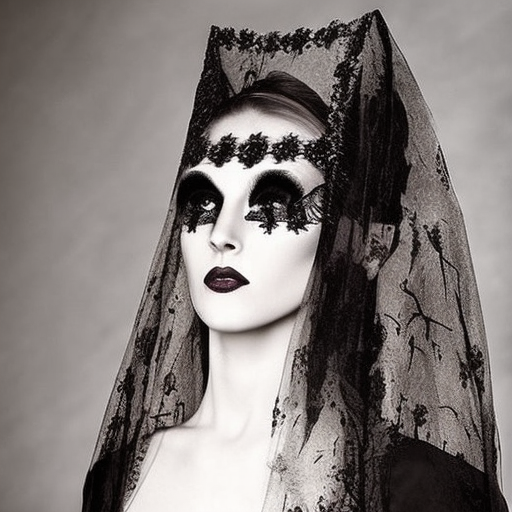Gothic Fashion: A Dark and Unique Style
Gothic fashion is a subculture that emerged in the 1980s and has since become a prominent style associated with dark, mysterious, and sometimes macabre aesthetics. It draws inspiration from various sources, including gothic literature, horror films, and medieval fashion. This summary will explore the key elements of gothic fashion, its history, and its influence on contemporary culture.
Elements of Gothic Fashion
Gothic fashion is characterized by its dark color palette, often featuring black as the dominant hue. Other colors such as deep red, purple, and dark green are also commonly used. The clothing is typically loose-fitting and layered, with an emphasis on flowing fabrics such as lace, velvet, and chiffon. Leather and PVC are also popular materials, adding a touch of edginess to the overall look.
Accessories play a crucial role in gothic fashion, with items like chokers, studded belts, and fingerless gloves being common choices. Jewelry often features intricate designs, incorporating symbols such as crosses, bats, and skulls. Footwear ranges from combat boots to Victorian-inspired lace-up boots, adding a touch of elegance to the ensemble.
History of Gothic Fashion
Gothic fashion can trace its roots back to the punk subculture of the 1970s. However, it truly gained momentum in the 1980s with the rise of gothic rock music. Bands like Siouxsie and the Banshees, The Cure, and Bauhaus not only influenced the music scene but also became fashion icons for their distinctive gothic style.
The gothic fashion movement was further popularized by the goth subculture, which embraced a darker and more romantic aesthetic. Gothic literature, particularly the works of Edgar Allan Poe and Bram Stoker, served as a significant influence on the subculture’s fashion choices. The Victorian era also played a role in shaping gothic fashion, with its emphasis on corsets, lace, and mourning attire.
Influence on Contemporary Culture
Gothic fashion continues to have a significant impact on contemporary culture. It has inspired numerous designers, both within the alternative fashion scene and mainstream fashion industry. Elements of gothic fashion can be seen in high fashion collections, runway shows, and even street style.
The influence of gothic fashion extends beyond clothing and accessories. It has permeated other art forms such as photography, film, and literature. Gothic aesthetics are often used to create atmospheric and haunting visuals, evoking a sense of mystery and darkness.
In recent years, gothic fashion has also gained popularity in the cosplay community. Many enthusiasts incorporate gothic elements into their costumes, drawing inspiration from gothic literature, horror films, and video games. This fusion of gothic fashion and cosplay has created a unique and diverse subculture within the larger gothic community.
Conclusion
Gothic fashion is a distinctive and captivating style that has evolved over the years. It draws inspiration from various sources, including gothic literature, punk subculture, and Victorian fashion. With its dark color palette, flowing fabrics, and intricate accessories, gothic fashion continues to captivate and inspire individuals around the world. Its influence can be seen in various art forms and has become an integral part of contemporary culture. Whether embraced as a lifestyle or simply appreciated for its unique aesthetics, gothic fashion remains a powerful and enduring subculture.












